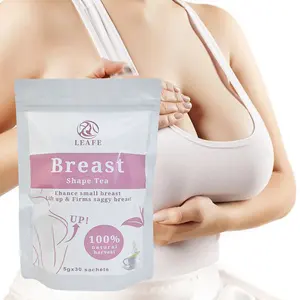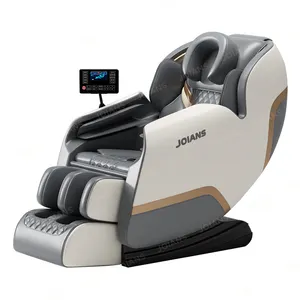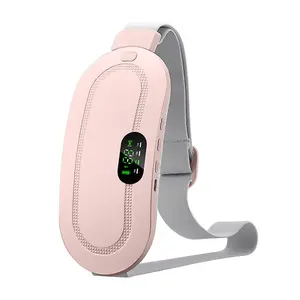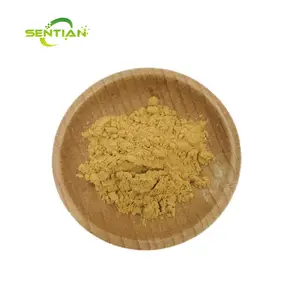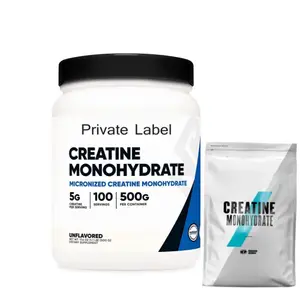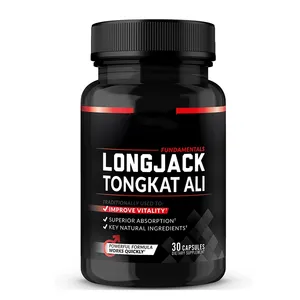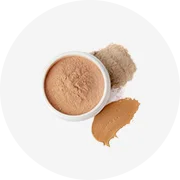Phổ biến trong ngành của bạn






Hd07 Chất lượng cao Crepe Băng Nhà máy cung cấp y tế bông đàn hồi Spandex băng 4 "* 4.5m
255 ₫ - 2.037 ₫
Đơn hàng tối thiểu: 10000 Cuộn







Thể Thao Bọc Băng Dính Dưới Bọc Băng Bọt Băng Vết Thương Băng
Sẵn sàng vận chuyển
4.583 ₫ - 5.347 ₫
Đơn hàng tối thiểu: 12 Cuộn
Vận chuyển mỗi chiếc: 42.774 ₫







Dùng một lần hấp thụ thoát vị Stapler phẫu thuật lưới tacker thoát vị lưới cố định cho phẫu thuật
992.946 ₫ - 1.145.707 ₫
Đơn hàng tối thiểu: 1 Cái







Băng Đúc Chỉnh Hình Chất Lượng Cao Khuyến Mại Nẹp Đúc HM Dùng Trong Y Tế Bằng Thạch Cao
25.461 ₫ - 33.099 ₫
Đơn hàng tối thiểu: 500 Cái






Sợi thủy tinh đúc Nẹp Y Tế nẹp cho cánh tay và chân cố định chỉnh hình nẹp thạch cao đúc Băng
66.197 ₫ - 76.381 ₫
Đơn hàng tối thiểu: 100 Cuộn






Y tế có thể điều chỉnh tay Cổ tay Doanh bong gân fixator gãy ngón tay cái cố định Brace thạch cao nẹp
198.590 ₫ - 224.050 ₫
Đơn hàng tối thiểu: 1 Cái






Ngoài trời đầu tiên Viện trợ cố định CuộN tấm Polymer thạch cao Nẹp ngón tay nhựa cổ tay chân cố định gãy xương nẹp
58.559 ₫ - 76.381 ₫
Đơn hàng tối thiểu: 100 Cái




Inflatable mắt cá chân Brace thạch cao hỗ trợ nẹp sau khi dây chằng rách phẫu thuật
75.872 ₫ - 165.491 ₫
Đơn hàng tối thiểu: 5 Cái






3 kéo có thể điều chỉnh dây đai plantar Fasciitis nẹp phiên bản nâng cấp ổn định khung giảm đau chân thả Corrector
105.660 ₫ - 108.970 ₫
Đơn hàng tối thiểu: 500 Cái






Nhà Máy Giá Viện trợ đầu tiên cứu hộ thiết bị cho tranfusion y tế bọt IV cánh tay nẹp
12.731 ₫ - 63.651 ₫
Đơn hàng tối thiểu: 1 Cái
Các tìm kiếm liên quan:
thạch cao nẹp nhà cung cấpnẹp băng thạch caovải sơn hútbệnh viện dã chiếnnẹp băng thạch caonẹp thạch cao y tếce thạch cao y tế băngbăng thạch cao bệnh việnbăng thạch cao chỉnh hìnhbăng thạch cao chỉnh hình y tếthạch cao y tế của parisbăng thạch cao khô nhanhthạch cao chỉnh hình của băng parisphẫu thuật thạch cao paristhạch cao y tế của tuyến tiền liệt





Băng Đúc Nhựa Y Tế Polyester Nẹp Đúc Sợi Thủy Tinh Chống Thấm Nước Băng Chỉnh Hình Băng Đúc
30.553 ₫ - 34.117 ₫
Đơn hàng tối thiểu: 100 Túi






Cuộn Vải Lót Mỏng Bọc Vải Bông Dự Án Phẫu Thuật Chuyên Nghiệp Y Tế Đa Chức Năng Tùy Chỉnh
3.056 ₫ - 5.093 ₫
Đơn hàng tối thiểu: 360 Cuộn






Mới đến topplast đàn hồi vải thạch cao cho phép phù hợp với cơ thể của phong trào và đường nét Malaysia sản xuất
13.749 ₫ - 14.767 ₫
Đơn hàng tối thiểu: 400 Hộp






Amazon Dụng Cụ Duỗi Nẹp Kem Giảm Đau Chỉnh Hình Ngón Chân Ban Đêm Tnd Lớn
Sẵn sàng vận chuyển
14.767 ₫ - 17.313 ₫
Đơn hàng tối thiểu: 1 Hộp
Vận chuyển mỗi chiếc: 305.522 ₫




Neal đúc Băng chuyên nghiệp nóng bán Polyester Vải không thấm nước chỉnh hình thạch cao đúc BĂNG BĂNG
25.206 ₫ - 66.197 ₫
Đơn hàng tối thiểu: 500 Cuộn






Nhà máy tùy chỉnh sản xuất các sản phẩm khác nhau để giảm đau ngón tay Immobilizer cho bị hỏng thạch cao phôi chủng vv

50.921 ₫ - 63.651 ₫
Đơn hàng tối thiểu: 200 Cái






Sản Xuất Băng Đúc Chỉnh Hình Y Tế Băng Đúc Hoạt Động Dưới Nước Nẹp Đúc HM
25.461 ₫ - 33.099 ₫
Đơn hàng tối thiểu: 500 Cái






Senolo sợi thủy tinh đúc nẹp nẹp y tế cho cánh tay và chân cố định chỉnh hình nẹp thạch cao đúc băng
19.859 ₫ - 20.878 ₫
Đơn hàng tối thiểu: 500 Cuộn






Inflatable mắt cá chân bảo vệ mắt cá chân Doanh cố định Brace có thể thay thế thạch cao mắt cá chân bong gân dây chằng Tear nẹp
572.854 ₫ - 623.774 ₫
Đơn hàng tối thiểu: 1 Cái






Mắt cá chân cố định Brace bê mắt cá chân gãy xương Brace thạch cao giày chân Brace phục hồi chức năng fixator
Sẵn sàng vận chuyển
78.927 ₫ - 91.657 ₫
Đơn hàng tối thiểu: 100 Cái
Vận chuyển mỗi chiếc: 557.323 ₫






Có thể điều chỉnh đêm nẹp plantar Fasciitis giảm đau ngủ Achilles gân cáng khởi động ban đêm chân thả Brace
105.660 ₫ - 118.390 ₫
Đơn hàng tối thiểu: 1000 Cái






Băng Đúc Chỉnh Hình Thạch Cao Đúc Sợi Thủy Tinh Gãy Xương Dùng Một Lần Y Tế Băng Đúc Sợi Thủy Tinh Hoạt Tính Nước
25.461 ₫ - 63.651 ₫
Đơn hàng tối thiểu: 1000 Cái




Neal đúc Băng bán buôn chuyên nghiệp Polyester Vải không thấm nước chỉnh hình thạch cao đúc BĂNG BĂNG
25.206 ₫ - 66.197 ₫
Đơn hàng tối thiểu: 500 Cuộn






Dụng Cụ Làm Mặt Nạ Mô Hình Cơ Thể Dự Án Nghệ Thuật Bọc Phẫu Thuật Tùy Chỉnh Cuộn Vải Mềm Lót Thạch Cao
3.056 ₫ - 5.093 ₫
Đơn hàng tối thiểu: 360 Cuộn





Neoprene ngón tay bảo vệ được điều chỉnh trong Chiều dài mềm mại và thoải mái cho bị hỏng thạch cao phôi chủng vv
50.921 ₫ - 63.651 ₫
Đơn hàng tối thiểu: 200 Cái






Senolo sợi thủy tinh đúc nẹp nẹp y tế cho cánh tay và chân cố định chỉnh hình nẹp thạch cao đúc BĂNG BĂNG
19.859 ₫ - 20.878 ₫
Đơn hàng tối thiểu: 500 Cuộn






Y tế bảo vệ mắt cá chân cố định hỗ trợ nẹp thay vì thạch cao mắt cá chân bong gân gãy xương cố định thiết bị phục hồi chức năng
111.516 ₫ - 124.755 ₫
Đơn hàng tối thiểu: 1 Cái






Nhà Máy Xương Gãy Xương Sợi Đúc Băng Polyester Chỉnh Hình Thạch Cao Đúc Băng
53.467 ₫ - 216.412 ₫
Đơn hàng tối thiểu: 500 Cái



Nước kích hoạt chỉnh hình đúc băng cao rigidness sợi đúc nẹp chỉnh hình đúc Băng
25.461 ₫ - 63.651 ₫
Đơn hàng tối thiểu: 1000 Cái




Neal đúc Băng Hàn Quốc chất lượng cao polyester bệnh viện Trọng lượng nhẹ chỉnh hình thạch cao đúc BĂNG BĂNG
25.206 ₫ - 66.197 ₫
Đơn hàng tối thiểu: 500 Cuộn






Nẹp Ban Đêm Điều Chỉnh Được Viêm Cân Gan Chân Nẹp Chỉnh Hình Dụng Cụ Chỉnh Hình Thả Chân Lưng Đàn Hồi Dụng Cụ Chăm Sóc
63.651 ₫ - 76.381 ₫
Đơn hàng tối thiểu: 1000 Cái












Johold 2024 phổ biến ngoài trời Viện trợ đầu tiên cố định CuộN tấm Polymer thạch cao nẹp nhựa ngón tay Cổ tay chân cố định gãy xương nẹp
34.626 ₫ - 60.596 ₫
Đơn hàng tối thiểu: 100 Cái






Nẹp Đúc Sợi Thủy Tinh HD812 Nẹp Y Tế Cố Định Cánh Tay Và Chân Nẹp Chỉnh Hình Băng Đúc Thạch Cao
764 ₫
Đơn hàng tối thiểu: 5000 Cái






Băng Đúc Y Tế Băng Phẫu Thuật Băng Đúc Chỉnh Hình Vết Thương
Sẵn sàng vận chuyển
50.921 ₫
Đơn hàng tối thiểu: 20 Cái
Vận chuyển mỗi chiếc: 114.571 ₫






Băng Dính POP Băng Dính Gãy Xương Băng Đúc Paris Chỉnh Hình Chăm Sóc Vết Thương Bằng Polyester
25.461 ₫ - 28.261 ₫
Đơn hàng tối thiểu: 500 Túi




Neal đúc băng giá rẻ giá chuyên nghiệp polyester sợi thủy tinh moldable chỉnh hình thạch cao đúc BĂNG BĂNG
25.206 ₫ - 66.197 ₫
Đơn hàng tối thiểu: 500 Cuộn






Plantar Fasciitis đêm nẹp chỉnh hình ngủ Immobilizer căng khởi động Achilles viêm gân chân thả Brace
136.212 ₫ - 156.580 ₫
Đơn hàng tối thiểu: 500 Cái
Các danh mục hàng đầu
Giới thiệu về nẹp thạch cao
Tìm kiếm nẹp thạch cao. trên Alibaba.com và duyệt qua nhiều lựa chọn về các nhà cung cấp tuyệt vời. Tiết kiệm tiền khi dự trữ một thành phần để sử dụng trong một số mặt hàng thực phẩm khác nhau. Phần lớn nẹp thạch cao. có dạng bột dễ hòa tan và dễ trộn với các thành phần khác. Sử dụng như một chất thay thế thơm ngon, không chứa caffein cho cà phê hoặc để làm một số loại thuốc thảo dược. Các nhà sản xuất thực phẩm và công ty dược phẩm có thể hưởng lợi từ việc sử dụng thành phần hoàn toàn tự nhiên này.
Tất cả nẹp thạch cao. có mức độ tinh khiết rất cao, giúp sản phẩm cuối cùng không có các chất gây ô nhiễm tiềm ẩn. Bột màu trắng giữ được vẻ trung tính khi trộn các thành phần và sẽ không ảnh hưởng đến màu sắc. Các chất chiết xuất sẫm màu hơn cũng có sẵn và có thể mang lại bóng râm bổ sung trong thành phần sản phẩm cuối cùng. Khi uống vào cơ thể, bột inulin có trong sản phẩm có thể có tác dụng lợi khuẩn giúp cải thiện sức khỏe hệ tiêu hóa theo thời gian.
nẹp thạch cao được bán trên Alibaba.com tuân thủ các tiêu chuẩn cấp thực phẩm và cấp y tế để đảm bảo an toàn cho khách hàng. Các nhà cung cấp thường sẽ đóng gói sản phẩm trong túi hút chân không để bảo quản độ tươi và chất lượng. Đặc biệt những lô hàng lớn thường được đựng trong thùng phuy dễ vận chuyển. Hầu hết các chất chiết xuất sẽ mang lại thêm hương vị ngọt ngào để tạo cho công thức một hương vị dễ chịu hơn.
Duyệt qua nẹp thạch cao. trên Alibaba.com và tận hưởng chi phí thấp của một thành phần chính quan trọng được sử dụng trong các loại dược phẩm và đồ uống tốt cho sức khỏe. Cho dù người tiêu dùng cần cải thiện sức khỏe hệ tiêu hóa hoặc tạo ra đồ uống có hương vị cà phê mà không có caffeine, thì vẫn có rất nhiều lựa chọn có sẵn. Mua sắm xung quanh và tìm các nhà cung cấp tốt nhất có thể giao hàng với bất kỳ số lượng nào cần thiết.
Tất cả nẹp thạch cao. có mức độ tinh khiết rất cao, giúp sản phẩm cuối cùng không có các chất gây ô nhiễm tiềm ẩn. Bột màu trắng giữ được vẻ trung tính khi trộn các thành phần và sẽ không ảnh hưởng đến màu sắc. Các chất chiết xuất sẫm màu hơn cũng có sẵn và có thể mang lại bóng râm bổ sung trong thành phần sản phẩm cuối cùng. Khi uống vào cơ thể, bột inulin có trong sản phẩm có thể có tác dụng lợi khuẩn giúp cải thiện sức khỏe hệ tiêu hóa theo thời gian.
nẹp thạch cao được bán trên Alibaba.com tuân thủ các tiêu chuẩn cấp thực phẩm và cấp y tế để đảm bảo an toàn cho khách hàng. Các nhà cung cấp thường sẽ đóng gói sản phẩm trong túi hút chân không để bảo quản độ tươi và chất lượng. Đặc biệt những lô hàng lớn thường được đựng trong thùng phuy dễ vận chuyển. Hầu hết các chất chiết xuất sẽ mang lại thêm hương vị ngọt ngào để tạo cho công thức một hương vị dễ chịu hơn.
Duyệt qua nẹp thạch cao. trên Alibaba.com và tận hưởng chi phí thấp của một thành phần chính quan trọng được sử dụng trong các loại dược phẩm và đồ uống tốt cho sức khỏe. Cho dù người tiêu dùng cần cải thiện sức khỏe hệ tiêu hóa hoặc tạo ra đồ uống có hương vị cà phê mà không có caffeine, thì vẫn có rất nhiều lựa chọn có sẵn. Mua sắm xung quanh và tìm các nhà cung cấp tốt nhất có thể giao hàng với bất kỳ số lượng nào cần thiết.
